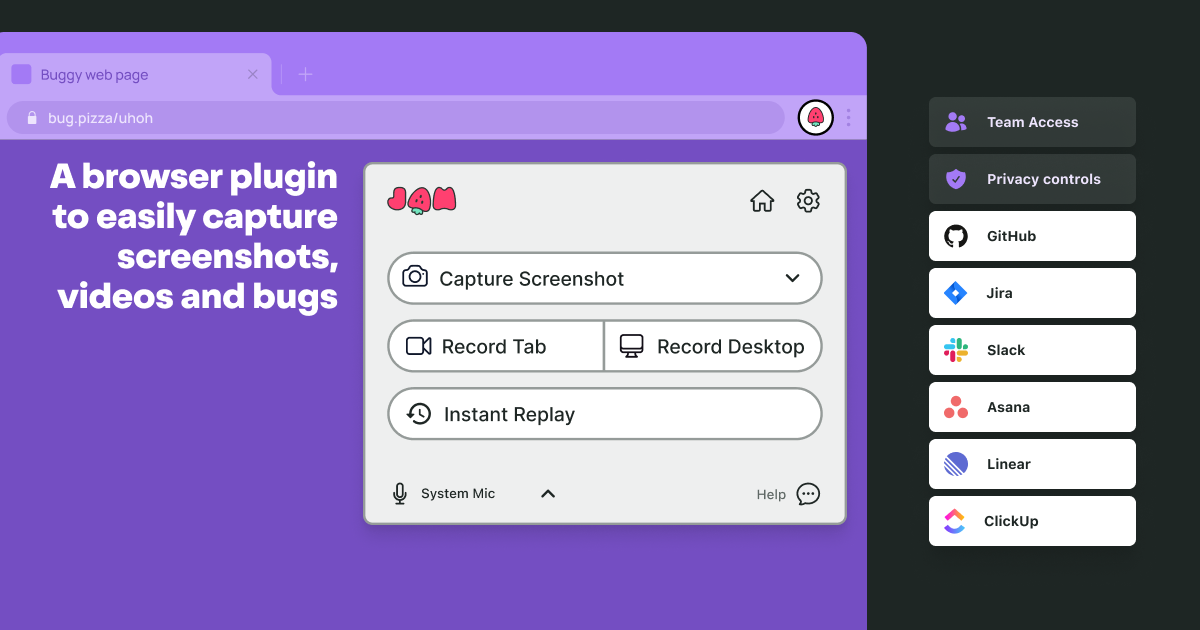Send better bug reports faster with Jam

In our modern era of digital disruption, quality assurance (QA) plays such a pivotal role in making sure the development of bug-free products. In this tough journey, innovative bug reporting tools, like Jam, are making their statement by offering an efficient and seamless way of managing bugs. The platform, as we'll explore today, embodies what we think to be the future of QA, taking bug reporting into a new domain of streamlined operations and empowered teamwork.

The Magic of Jam
The heart of Jam's success lies in its simplicity and functionality. Developers and testers can report bugs in seconds, with the process being as straightforward as taking a screenshot. Not only does this save invaluable time, but it also eliminates the disruption that traditional bug reporting methods could bring to your workflow.
The platform auto-generates bug reports that come with comprehensive information engineers need, including console and network logs, browser info, device details, reproduction steps, comments, and much more. It's like handing over a fully loaded debugging toolkit to your engineers, ready for immediate use.
Moreover, Jam integrates tightly with your favorite issue trackers and tools. Whether you're already logging bugs in Jira, tracking issues in Notion, reporting bugs in Asana, or another platform, Jam ensures that your bug reports find their way there, enhancing collaboration and transparency.
Catch bugs after they happen & never write repro steps again!
Seamless Communication and Collaboration
For a QA operative, the software's capacity to create a synergistic ecosystem for developers, testers, and stakeholders is of utmost importance. Jam checks this box too. The tool's centralized bug tracking architecture serves as a hub where bugs can be effectively captured, documented, and recorded. Bug ownership, comment additions, and real-time updates make team collaboration seamless and productive, thereby ensuring transparency and expediting bug resolution.
Workflow Management and Analytics
Beyond its primary bug reporting functionality, Jam takes a leap forward by offering customizable workflows. This allows QA teams to sketch their bug resolution blueprint and bring order to their process[3]. Sophisticated reporting and analytics features offer QA specialists the power to spot trends, gauge progress, and make decisions rooted in data, all aimed at bolstering software quality.
Automated Bug Reporting and Intuitive Interface
Revolutionizing efficiency, Jam also introduces the concept of automated bug reporting. This feature can automate the otherwise manual and time-consuming task, freeing QA teams to focus on higher-value tasks.
The user-centric interface design is yet another highlight of Jam. Its intuitive, friendly interface empowers QA individuals to craft and manage bug reports effortlessly, contributing to efficient bug management.
Conclusion
To sum it up, Jam brings a fresh wave of innovation to bug reporting, potentially making the lives of QA specialists significantly more manageable and their work considerably more efficient. As the software industry progresses, tools like Jam are not just desirable - they're becoming essential. No matter what stage your development process is in, embracing efficient bug reporting with Jam.dev is likely to be a decision you won't regret. After all, in this era of rapid technological change, staying ahead of the curve often means choosing the right tools for the job.
